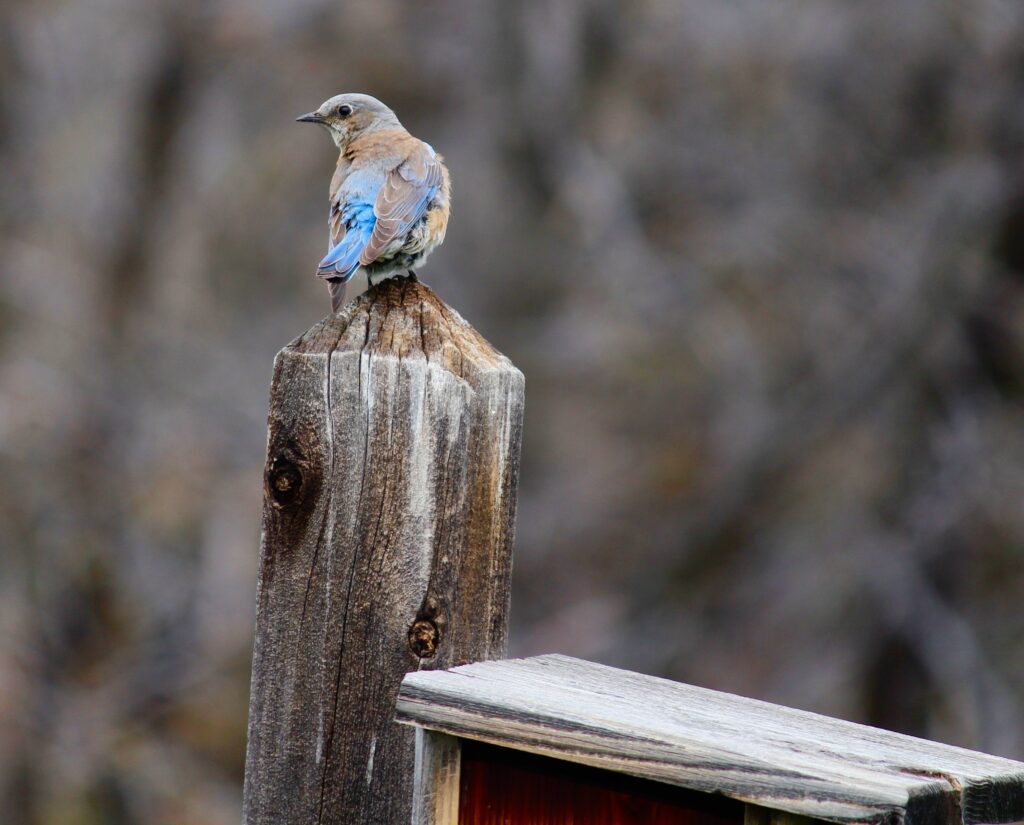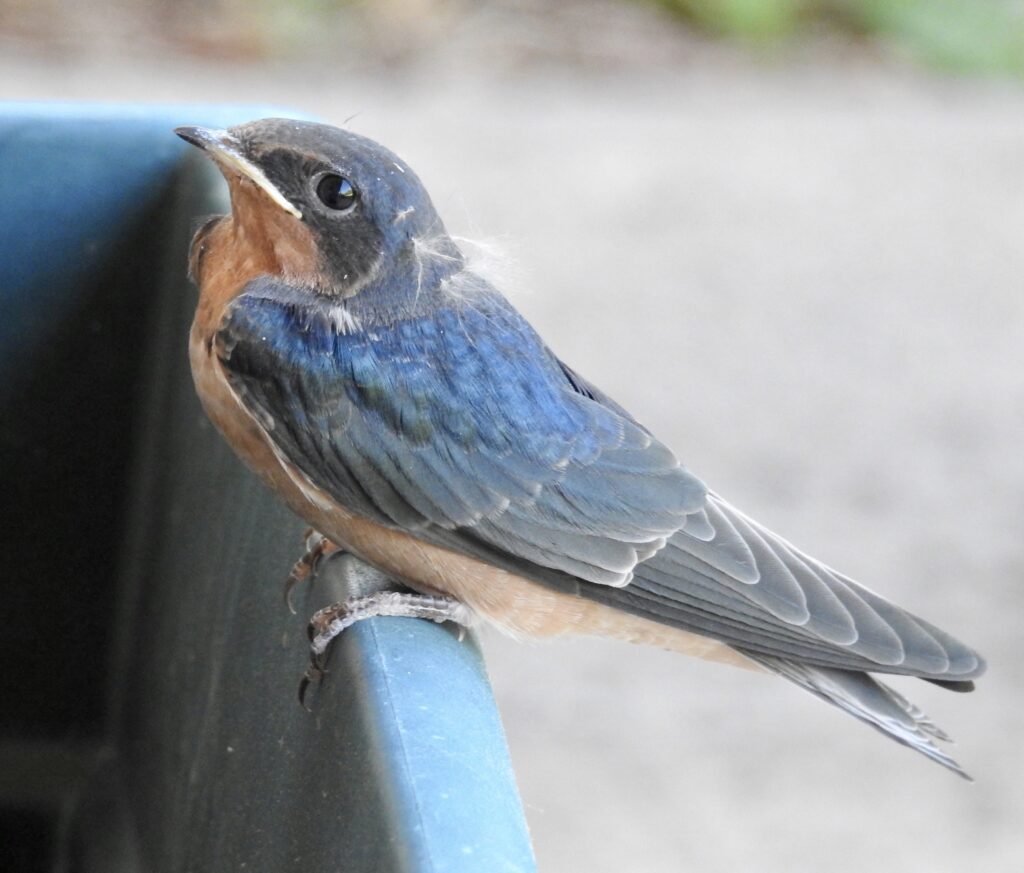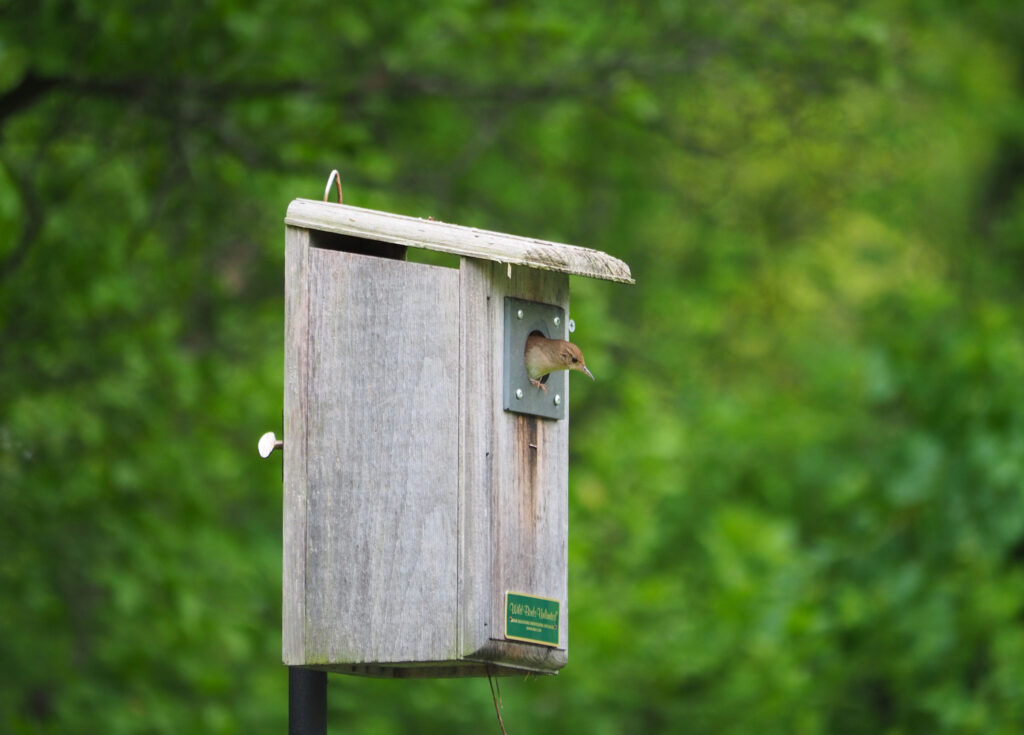Survival of the Coolest Nests: Birds, Heat Waves, and Conservation in Working Landscapes
October 31, 2023By Katherine S. Lauck, PhD Candidate, University of California, Davis

Things Are Heating Up
When we convert natural landscapes into farms, it’s easy to assume that birds will have a tougher time raising their young. To some extent, that’s true: many bird species struggle to survive and reproduce in farmlands. Others, however, are more flexible. Some of these species consume agricultural pests and maintain a functioning food web even in human-dominated landscapes. Thank you, birds!
However, these adaptable farm-dwelling birds face temperatures that can be about 10°C higher than nearby forests. Farms usually lack the shady spots that forests offer, making them much hotter. The combination of increased temperatures caused by loss of shade and rising heat from climate change can be tough on bird nestlings. It may dehydrate nestlings, slow their growth, and even prove lethal for young birds.

An Agrarian Icon
Our team at the University of California, Davis set out to understand how extreme heat affects bird nest success and whether this impact differs between farm and forest settings. To do this, we tapped into the valuable data from the Cornell Lab of Ornithology’s NestWatch project. We are so grateful to the many people contributing their nesting observations to the project across the United States! We used about 150,000 nesting observations of 58 species across 20 years to measure nest success. We investigated how the type of land where each nest was located, along with the local temperature during nesting, influenced the likelihood of birds to successfully rear at least one chick. We also wanted to understand why birds might be sensitive to heat, so we investigated how nest style (cup or cavity) and conservation status affected birds’ vulnerability to heat. Lastly, we used climate models to predict how nest success might change by the year 2100, considering the expected rise in average and extreme temperatures.
When extreme heat waves hit, birds nesting in farmlands were 30% less likely to successfully raise at least one chick. Surprisingly, the opposite was true for birds in forests: extreme heat events increased their chances of success. Forests might be crucial refuges for birds, even those that sometimes nest in farmland or open landscapes. Vulnerable bird species of high conservation concern were particularly affected by heat waves in farmlands. Offering protection from extreme heat in farmlands could be especially critical for these species. Finally, we discovered that birds with cavity nests had a better chance of fledging offspring during extreme heat compared to those with exposed cup nests. So, the type of nest matters!

Made In The Shade
When we projected nest success for the year 2100 under a business-as-usual emissions scenario (Representative Carbon Pathway, or RCP 8.5), we estimated that birds nesting in farmlands would see a 4.4% reduction in nest success compared to today. However, under a reduced emissions scenario (RCP 4.5), the reduction was only 1.1%. Lowering emissions could help birds continue to reproduce in farmland, potentially sustaining agricultural ecosystems into the future.
Taken together, our research underscores the importance of maintaining shade and cool spots for birds to nest in farmland. It’s essential to remember that our study focused on bird species that nest in various habitats. For birds exclusively nesting in natural open areas like grasslands, adding trees to their habitat might cause harm. However, for the birds we studied, strategies such as providing shade for nest boxes, preserving trees in farmlands, and safeguarding nearby forest patches could help them cope with rising temperatures. These interventions could help birds cope with extreme temperatures and enable them to thrive alongside us in agricultural landscapes.
Reference:
Lauck, K. S., A. Ke, E. M. Olimpi, D. Paredes, K. Hood, T. Phillips, W. R. L. Anderegg, and D. S. Karp. 2023. Agriculture and hot temperatures interactively erode the nest success of habitat generalist birds across the United States. Science 382(6668): 290–294. DOI: 10.1126/science.add2915

6 comments on “Survival of the Coolest Nests: Birds, Heat Waves, and Conservation in Working Landscapes”
Did the authors consider the food side of survival, in that insects may also be burdened by heat?
The study does not attempt to quantify insect abundance (as NestWatch data are collected at the national scale, and there is no comparable dataset on insects). Heat could directly act on birds, or indirectly through reduced prey availability (and the subsequent moisture loss since most birds get their water from their prey). Pesticide use can complicate the issue. But since they do not have data on insect abundance, it makes sense that they would refrain from discussing insects too much in this article. The original study does say that “arthropods are particularly sensitive to climate warming in agriculture but more buffered in natural habitats” (citing a study by Outhwaite et al. 2022)
In last year’s heat wave, I lost every bird in 5 of my 10 BB boxes. My numbers were down 50%. I had tried painting them white to reflex more heat but that did not work. Last January, I installed vents in all boxes and drilled 3/8 inch holes all around the sides to allow for more flow-through. Not sure yet how this will fare over the long term. Seemed to work somewhat this year. May need to move away from the fence lines which they prefer over to the wooded areas that they do not like. Will be disappointing.
“When we convert natural landscapes into farms…” why single out farms? One would imagine that converting natural landscape into anything – – a housing development, a shopping center or simply an over-sized backyard “entertaining space” – – would be comparable.
Hi Julie, the study looked at four different types of habitats: forests, grasslands, agriculture, and developed areas. Agriculture was the only one to show a detrimental impact on survival during heat waves, so it is the focus of the article. The forest habitat type actually showed a positive impact, while grasslands and developed areas were neutral. Developed areas may still contain trees or buildings that create shade, whereas temperatures in agricultural areas may be as much as 10 degrees Celsius warmer than nearby natural habitat (thus exacerbating the effects of heat waves).
Changing the design of boxes. Gilwood slot double roof with a thermal gap. Placement in afternoon shade if possible.